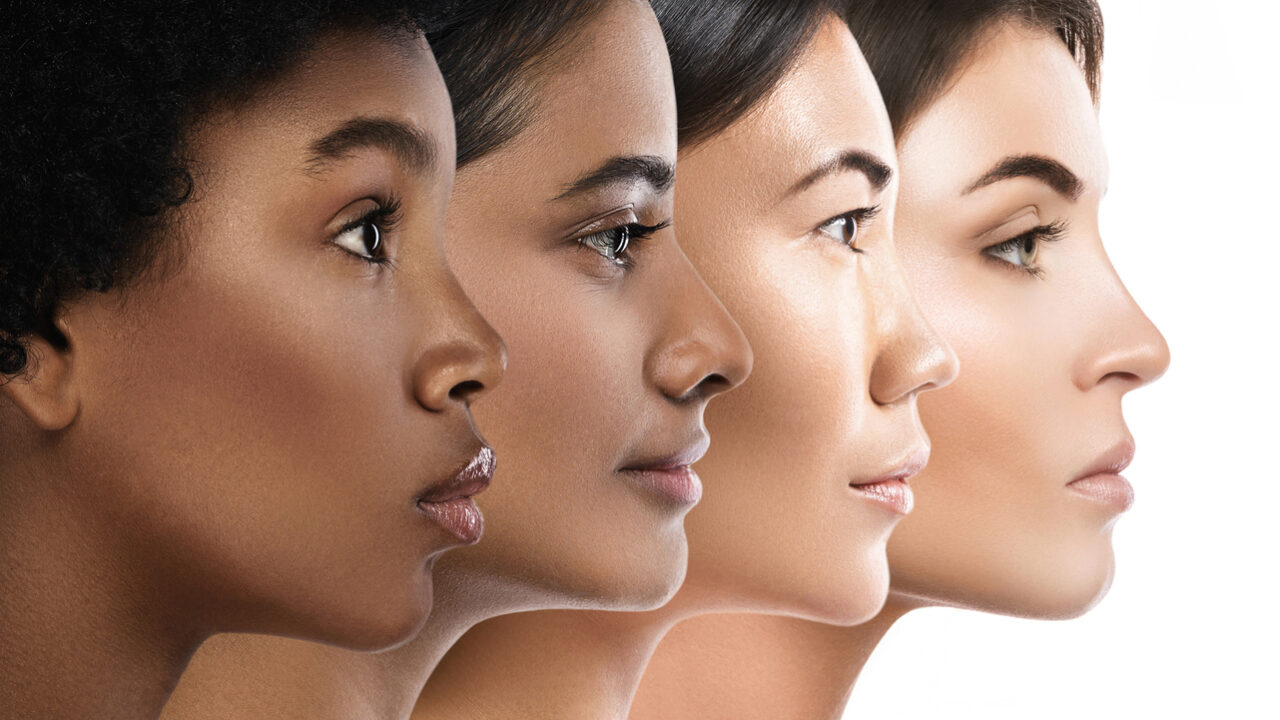
It can take years to get to grips with what does, and doesn’t, suit your skin. We’ve gone through a LOT of trial and error with various serums, moisturisers and more and just when we thought we had it down, we hit a new decade and it’s time to reassess.
This is because what worked for you in your 20s may not be appropriate, or enough, as you go through your 30s. That’s not to mention what happens when you reach the menopause (pregnancy can also cause major skin changes, but these are usually temporary.)
With this in mind, we’ve looked into the science of how skin changes in our 20s, 30s, 40s, 50s, and 60+ to help you understand a little more about what could be happening. It may help you make more informed skincare choices, get to grips with specific problems, or at least give you peace of mind that you’re not imagining things!
We’ve also, separately, given makeup tips for every decade of your life, too. Click here to find out more.
FURTHER READING: Perfect your skincare routine with our pick of must-have facial products in 2021
We’ve divided the changes up by decade. You can, of course, read the entire piece, or feel free to scroll down to the relevant section(s). In each decade, we explain the science of what is happening as well as products to look out for and advice.
There are three rules that everyone should follow, regardless of their age. These are:
FURTHER READING: What SPF do I need? The best moisturisers with SPF, from Supergoop’s Unseen Sunscreen to Heliocare 360
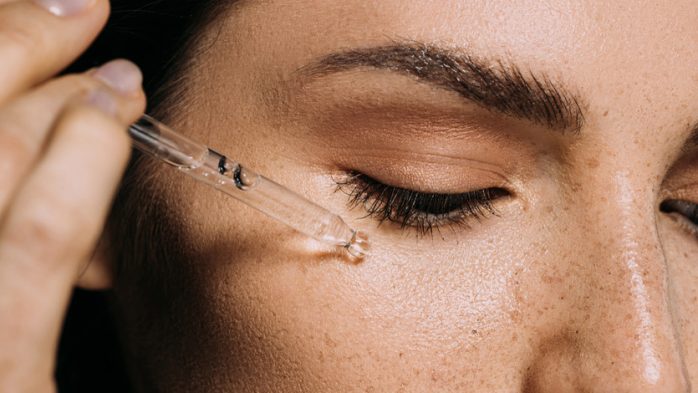 Getty Images/iStockphoto
Getty Images/iStockphoto Your 20s are usually the time many people look to establish a skincare routine – even if it’s a simple one. Chances are your teenage skin, and hormones, have calmed down and you’ll finally get a glimpse into what skin type you have.
This isn’t always the case, though. We didn’t start looking into skincare routines seriously, beyond maybe a cleanser or soap, until our early 30s. It’s just, the earlier you start taking care of your particular skin type, the better the results will be over time.
FURTHER READING: Sleeping beauty: The best overnight hair masks, face creams and foot treatments
Take the time to get to know your skin type. If you’re not sure where to start, check out our What skin type do I have? guide.
If the amount of skincare is overwhelming, start with a cleanser, moisturiser, and SPF. And if you’re on a budget, each of our Best Buys includes a Bargain Buy, which comes in at under £10 (where possible).
Don’t worry about eye creams, toners, serums, essences, and oils just yet (unless you want to of course). Get used to what your skin does, and doesn’t like, with the basics and build up from there. The Ordinary brand is a good place to start, and we’ve listed the best The Ordinary products for various skin concerns.
And to tackle the drop in antioxidants, look for skincare with Vitamin C and/or E, green tea extract, and fruit acids.
FURTHER READING: What skin type do I have? Discover how to know your skin type with our skin types guide
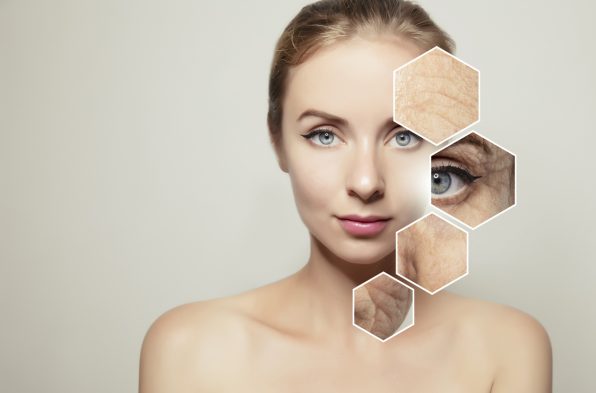 Getty Images/iStockphoto
Getty Images/iStockphoto As you enter your 30s, you may start to see more signs of anti-ageing. This is likely to be the biggest change to your skin. When this is combined with pregnancy, you may see a wider range of changes.
A recent study from Hada Labo Tokyo found that more than 40% of women over the age of 35 complain about dry or dehydrated skin. This study also found that 63% of women said that hydration is the most important factor when it comes to choosing skincare.
However, 44% of them believe that hydrating their skin means drinking more water and 38% think it means slathering on more moisturiser. A cynical 12% even believe that dehydration is made up by beauty industry marketeers!
FURTHER READING: How to prevent wrinkles, according to the experts – and why your phone may be making you look old
OUR SKIN JOURNEY
We had oily skin throughout our teens, 20s, and early 30s, and everything in our skincare arsenal was formulated to remove oil.
In our mid-30s, we noticed red patches on our cheeks and started using products to even our skin tone.
They didn’t work and we realised that while our T-zone and nose was still oily, our cheeks were now dry.
This caused our oily skin products to make our cheeks dry and sensitive – hence the redness.
We’ve recently switched to combination products, and we use two different face masks for different parts of our face, and have seen a vast improvement.
It may feel like you’ve only just nailed your skincare routine, but if you find your skin reacting differently – whether that’s through an increase in breakouts, dry patches, redness etc – it might be time to reassess.
If you haven’t already expanded your skincare routine, your 30s are when you should invest in a serum. Serums deliver a higher concentration of active ingredients and, because they’re made up of smaller molecules, they go deeper into your skin.
Taking all of these wondrous ingredients with them.
“With increasing age, the body starts to produce less hyaluronic acid and what it does produce is lower quality. This results in drier, more dehydrated skin and stiffer, creakier joints,” said leading dermatologist, Dr Sharon Wong.
“To keep skin looking healthy, smooth and supple, we need to add hydration and it is important to realise that a moisturiser alone will not do that particular job. A hydrator is formulated to put moisture back into the skin, while a moisturiser is generally designed to create a barrier to slow down or prevent moisture from being lost.”
It’s also a good idea to start using retinol, or an equivalent anti-ageing product and introduce eye cream to your routine. In fairness, it’s never too early to look after the skin around your eyes but in your 30s, it becomes a more pressing priority.
Chances are, you’ll start to see signs of ageing in your 30s but even if you’re lucky enough to avoid this – black skin, in particular, is thicker and tends to show signs of ageing later in life – adding retinol to your routine now can act as a preventative measure. Read our guide to retinol so you know how to do this safely.
Unfortunately, if you haven’t been doing this already, your 30s are the time to really focus on skincare for your neck. We’ve explained why in our article: Best neck cream: Stop sagging necks, décolletage and cleavage with firming creams from Prai, IMIM and more.
Due to the fact your skin is becoming more delicate, and sensitive in your 30s, go easy on it.
Try not to drink too much alcohol, and get as much sleep as you can (we know that’s boring. Sorry!) and when applying skincare, be gentle. Especially around your eye area.
And wear SPF. Daily. Even in winter.
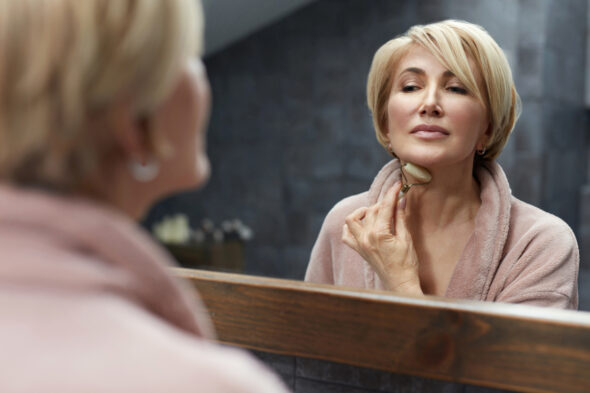 iStock
iStock If you didn’t see any signs of ageing in your 30s, or they were just starting to peek through, they’ll likely become much more common in your 40s.
The small smattering of fine lines around your eyes will make way for more deep-set wrinkles as you head into your 40s. In fact, the only difference between fine lines and wrinkles is how deep they are.
These will appear in areas where your skin has the most movement, particularly on the thin skin around the eyes and mouth. You’ll also see them on your forehead, and neck.
Another common skin change that becomes more apparent as you get older is age spots, also known as dark spots, and possibly broken capillaries on your cheeks. Plus, puffiness and bags.
Skin damage, caused by too much sun when you’re younger, will start to show in your thirties but they’ll get darker in your 40s. Your pores will also become larger if the sun has damaged them.
Niacinamide, also known as vitamin B3, is what you need to start using to rev up your metabolism to have younger-looking skin. Lucky for you, niacinamide can be found in many face creams. These are dermatologist’s tips for getting rid of wrinkles.
If you adopted a skincare routine, even a simple one, in your 20s and have continued to evolve it throughout your 30s, then the damage to your skin and signs of ageing will be much less noticeable by the time you’re in your 40s. Especially if you’ve been living by the golden rule of using SPF daily, even in winter.
This doesn’t necessarily mean you won’t see any signs of ageing. It also doesn’t mean that it’s too late to start taking care of your skin if you haven’t given it much thought until now.
If you haven’t already, it’s time to start adding anti-ageing products to your skincare routine. This includes retinol, glycolic acid, and peptides. You also shouldn’t just be looking for these ingredients in your moisturisers and creams – there is a host of anti-ageing cleansers and toners, as well.
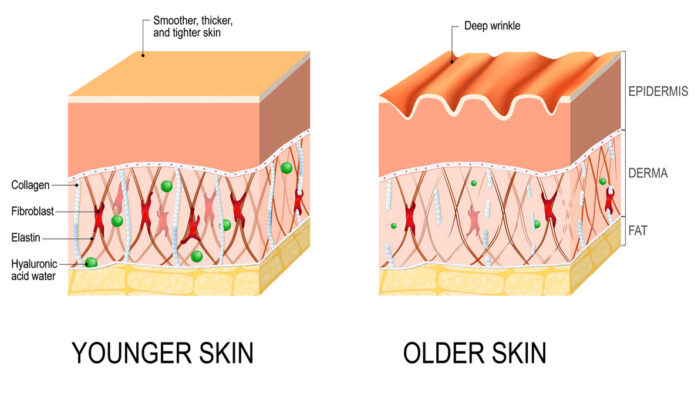 iStock
iStock And don’t forget your neck. If you’ve been concentrating on your face all this time and neglected your neck, it will start to show.
Other ingredients to look out for include hyaluronic acid, almond oil, and rose oil, to soothe and hydrate, and Vitamin C, and green tea to brighten the skin.
This can be a tricky time because your skin type, itself – dry, oily, sensitive, etc – is likely to change all that much in your 40s. Certainly not in the way it did when you went through your 20s and 30s, which means that you may have found a routine of products that suit you best.
When you come to add new anti-ageing products to this, it can mess with the balance so you might be back to having to take part in a little trial and error.
It’s also a good time to check your diet. Have a read through our Skin food: The best foods for clear, healthy skin – and why they work guide for more information.
FURTHER READING: Best dark spot corrector: Brighten your skin with our pick of the best age spot creams and toners
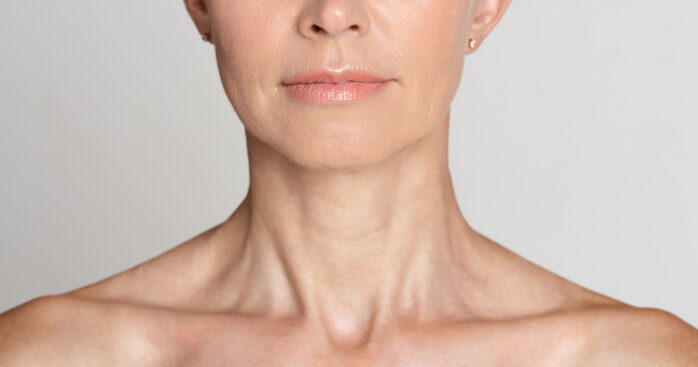 Getty Images/iStockphoto
Getty Images/iStockphoto During your 50s you’ll likely notice that your skin becomes a lot drier. As your estrogen levels drop – caused by both ageing and going through the menopause – your skin can become less hydrated and rougher. You can read more about this in our What happens to skin and hair during menopause? Tips on how to manage menopause symptoms guide.
FURTHER READING: The science of serums: What is serum and what does serum do?
If you’ve been using lightweight moisturisers up to now – whether that’s because you’ve had oily skin, or suffered from adult acne – your 50s is the time to increase the richness.
Many of the best anti-ageing creams will contain oils, petroleum jelly, and they’ll likely be labelled as “rich”, so you know they’re better suited to mature skin.
MAMABELLA TIP
If you want to balance your skin’s pH, try probiotic skincare.
Probiotics are effectively ‘good’ bacteria.
They’re common in digestive treatments but work well for skin because they restore its natural microbiome.
This helps regulate everything from hydration to sensitivity.
Your 50s is a good time to add facial oils to your routine if you haven’t already, because they deeply hydrate, protect and plump up the skin.
Similarly, serums become ever more important in your routine in your 50s as they also go deeper into the skin to try to restore and rebuild it from the inside out.
Eye cream should also be a staple, both morning and night. As should neck creams.
To avoid stripping your skin of the remaining oils, opt for a cream cleanser or cleansing balm, and milk toner.
These are more gentle and nourishing and can counteract an increase in dryness.
In addition to looking for rich moisturisers, ingredients that can help make your skin look brighter and firmer include niacinamide and hyaluronic acid, plus hydrolyzed collagen – we’ve been taking the Great Lakes Collagen powder and have noticed a difference to our face and neck – Vitamin C, and essential oils.
FURTHER READING: Avon Plumping Shots review: Before and after photos show if Anew Skin Reset can restore 7 years of collagen in 7 ?
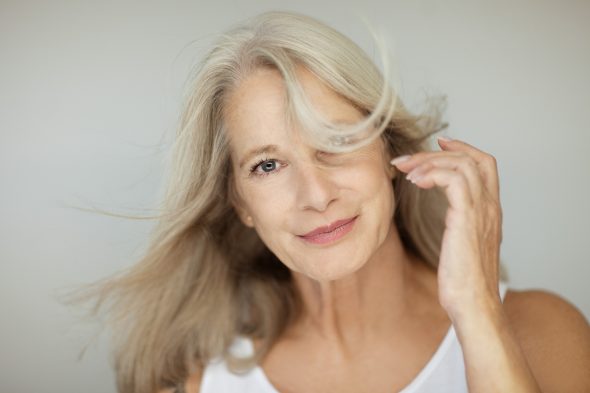 iStock
iStock In your 60s, and particularly as you head into your 70s, the hormonal fluctuations caused by menopause settle down and you’ll finally get a period of normality for your skin. For the first time since you were a kid!
However, your skin’s intrinsic ageing phase will now ramp up.
FURTHER READING: Skincare makeup: The best beauty products that are good for your complexion while saving you time and money
Just like in your 50s, your skincare routine in your 60s needs to be hydrating, nourishing and gentle.
As skin becomes drier, it can become more sensitive and red so look for anti-inflammatory ingredients such as chamomile, calendula, and oatmeal. We’re huge fans of the Oatmeal Cleansing Balm from The Inkey List.
Continue to focus on your neck and if you’re applying a moisturiser or mask to your face, always take it down onto your neck and chest.
Age spots will have been cropping up for decades now but if any new moles or spots appear that you’re unsure about, speak to a doctor or dermatologist. This is the age when skin cancer can be more prevalent so it’s good to keep using SPF and check out any changes.
FURTHER READING: #Vulvalution: Cult Beauty teams up with Lady Garden to get more people talking about gynaecological cancers
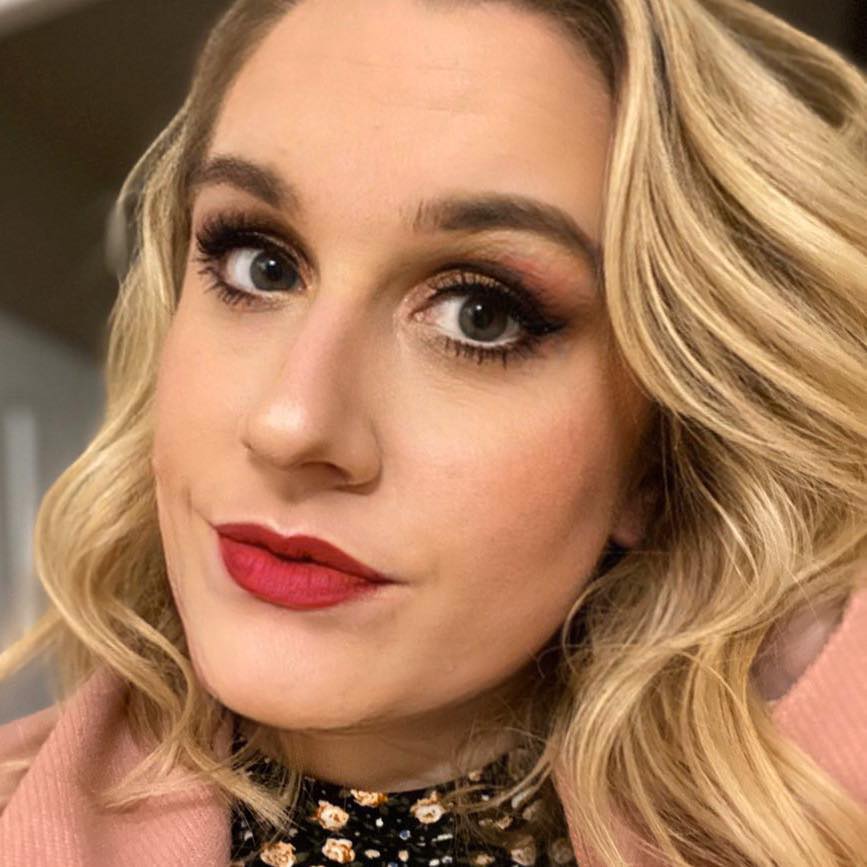
Victoria is founder and editor-in-chief of mamabella, freelance journalist and Mum. She has a passion for empowering people to feel beautiful whatever their age, size, skin type and budget
